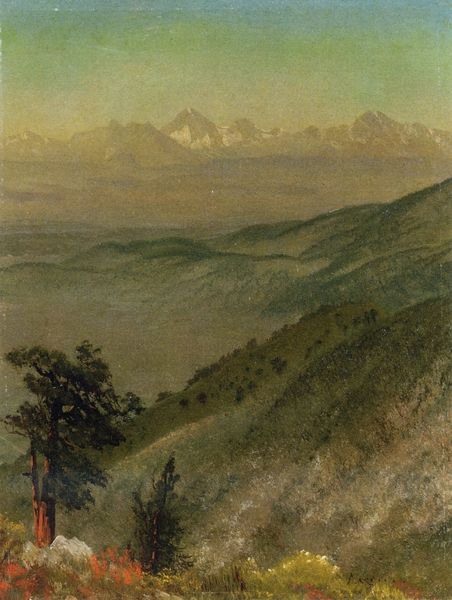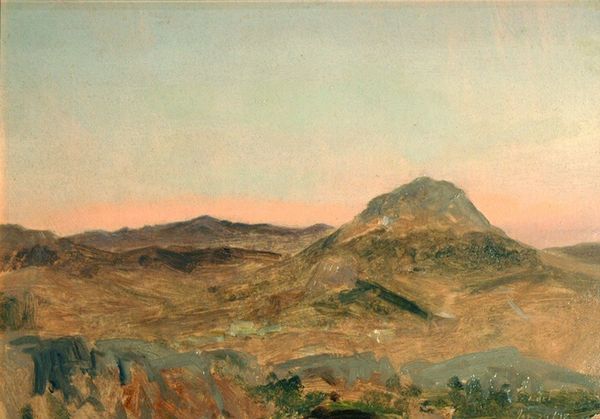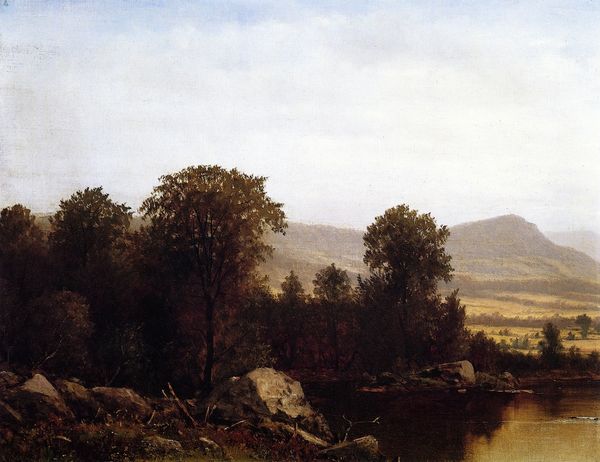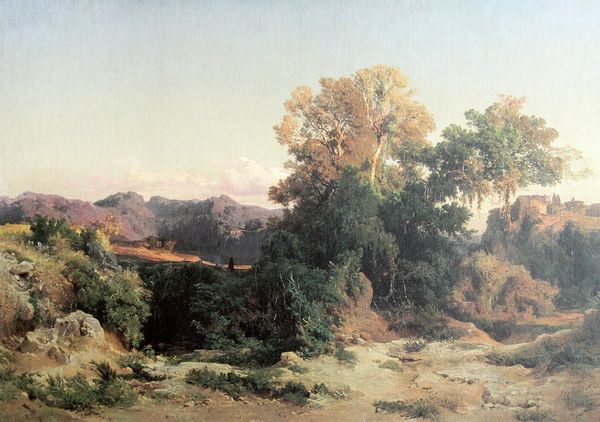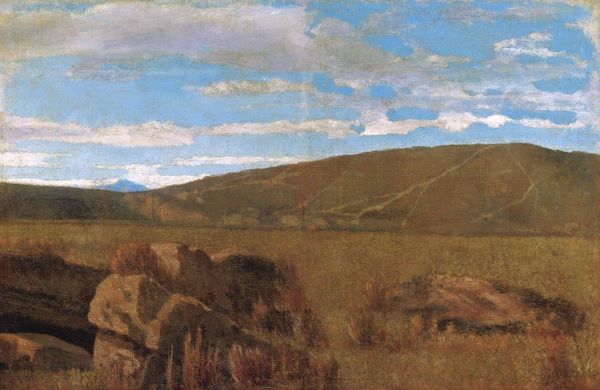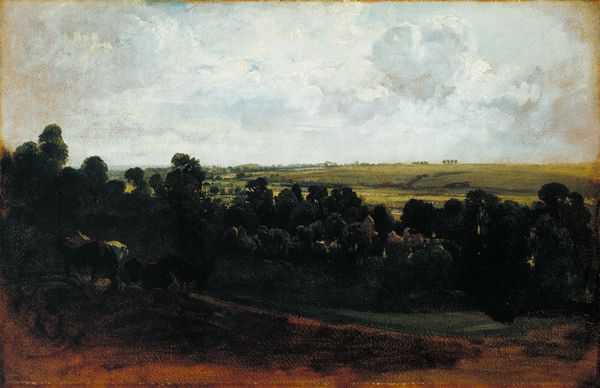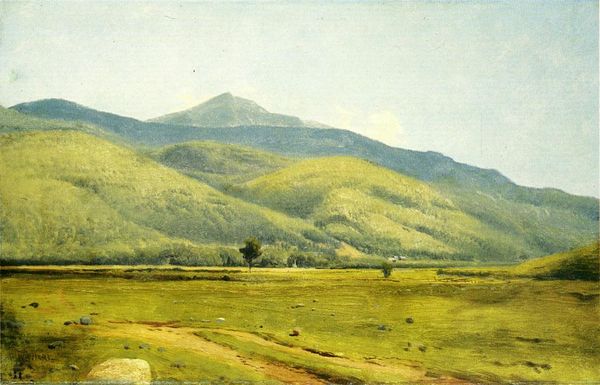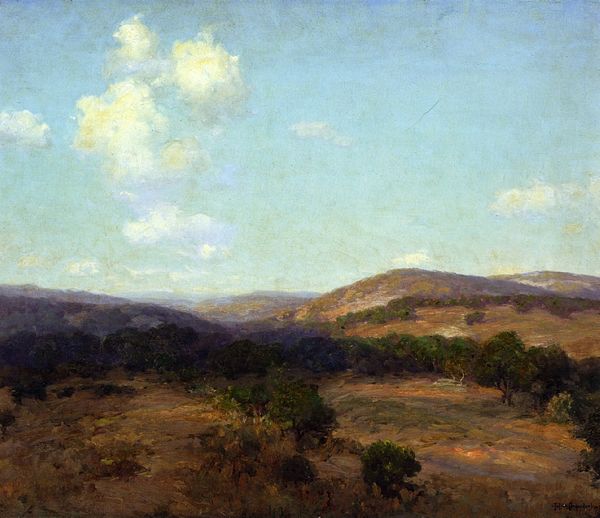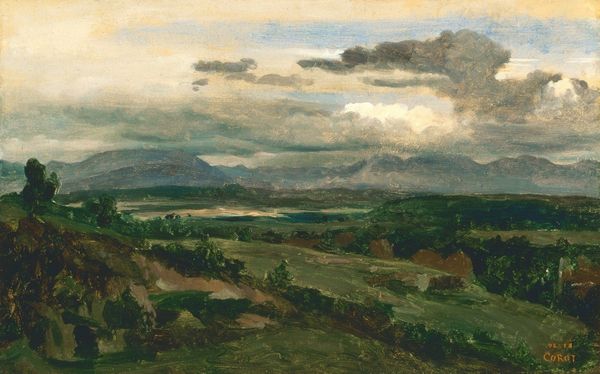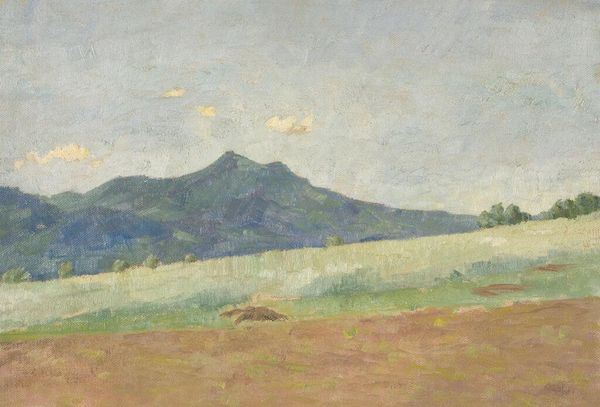
Dimensions: 17.15 x 26.67 cm
Copyright: Public domain
Curator: Let's explore Albert Bierstadt's "The Plains Near Fort Laramie," painted in 1863. Editor: Immediately striking is the muted palette; the canvas seems veiled in a golden, almost melancholic light. It's not the expansive grandeur often associated with Bierstadt. Curator: Precisely. Notice the deliberate compositional choices. The horizontal arrangement emphasizes the vastness of the plains, a stark contrast to the elevated mountains in the background. The density of the foreground flattens, pushing back to the dramatic mountains. Editor: And what does that say symbolically? Mountains often signify aspiration or challenge, while plains represent opportunity or, conversely, the monotony of daily life. The somber earth tones lend a feeling of austerity—a far cry from a pastoral promise. Curator: Indeed. Consider the Hudson River School influence, evident in Bierstadt’s use of plein-air techniques for this study, the way the sky transitions, revealing clouds, offers both a representational and structural framework for the composition, and allows us to decode his approach to landscape, not just in subject, but in his method. Editor: Fort Laramie holds particular weight, though; an outpost during a period of immense westward expansion. This vista presents itself as both a scenic observation and as something tinged by conflict and dispossession. Perhaps it is something less about sublime aesthetics, but more about the human cost in geographical shifts. Curator: Perhaps, as we see with artists within Romanticism and Realism, it can be a lens into the politics that go hand in hand with geographic representation. But here, the balance in elements suggests both, or neither! The muted and balanced tonal choices could speak to an artist seeking form over message. Editor: Interesting, how you distill form, whereas I lean into symbol, as though each answers our questions separately. Perhaps each method helps unpack it that much more! Curator: That interplay—structure versus interpretation—can ultimately shape how one confronts the essence of such a quiet work. Editor: Yes, it all underscores the image's enduring power: it reflects not just a landscape but an emotional and ideological space that history is still working out, too.
Comments
No comments
Be the first to comment and join the conversation on the ultimate creative platform.

